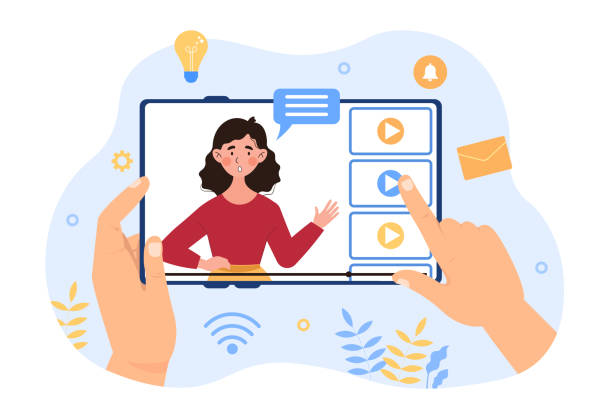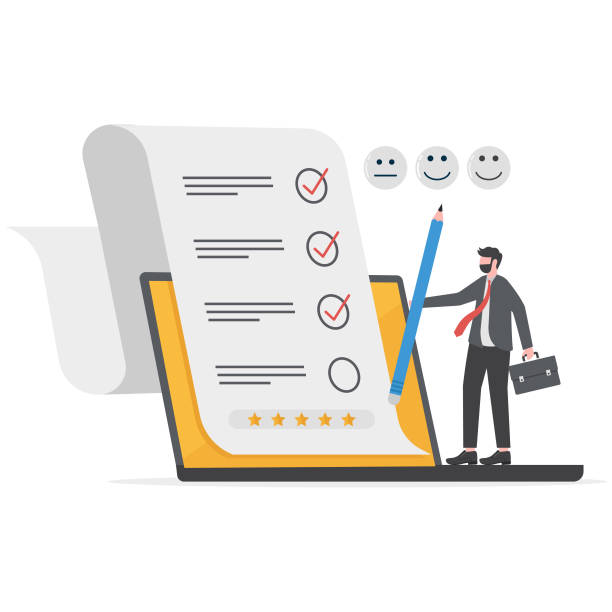Why is Custom Website Design Vital for Your Business?
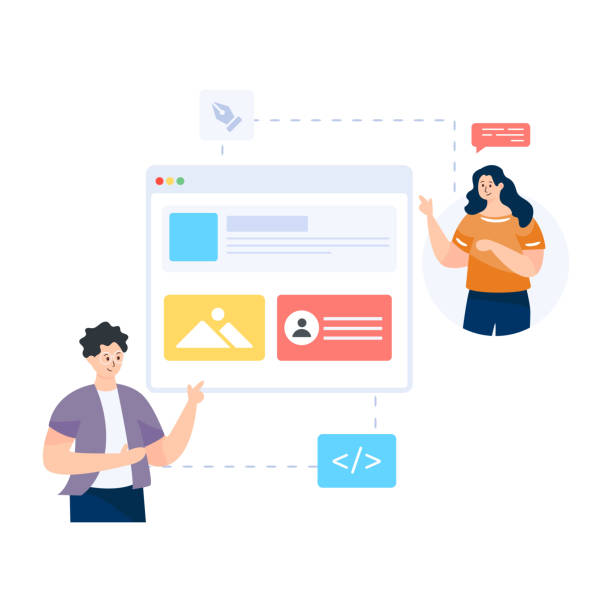
In today’s digital world, where the pace of change is unprecedented, having a powerful and efficient website is no longer a luxury choice but an indispensable necessity for any business that intends to remain competitive and grow.
But can every website fully meet the unique and complex needs of your business? The answer lies in the advanced and practical concept of #Custom Website Design.
Unlike ready-made templates that have numerous structural and functional limitations and are designed to meet general needs, custom website design allows you to precisely and uniquely #personalize every aspect of your online presence in accordance with your brand’s unique goals.
This educational and comprehensive approach helps you implement exactly what you need to achieve your business goals, without any compromise in performance, security, or aesthetics.
A custom website means enjoying infinite flexibility in functionality, visual design, and providing an unparalleled user experience.
This means that your website will not only have a completely unique look tailored to your brand identity but will also be fully aligned with your internal workflows, management systems, and long-term strategic goals.
From creating completely unique and innovative features not found in any template to seamless integration with existing internal systems like CRM or ERP, everything is under your complete control.
This type of design empowers businesses to decisively differentiate themselves from competitors and build a digital identity that fully reflects their values, organizational culture, and unique offerings.
Have you ever wondered if your brand would be as well-suited by an off-the-rack suit designed for the general public as it would by a custom-tailored suit made with utmost precision just for you? Of course not, the difference is night and day.
Your website is exactly the same; a vital tool for brand imaging.
Every #feature, every #capability, and every section of it can be customized according to the precise needs of your target audience and your long-term goals, from specific contact forms to complex content management systems.
This investment not only means having a beautiful and eye-catching website but also having a powerful, scalable, and sustainable tool for the continuous growth and development of your business in the online space and increasing your market share.
This choice ensures that your digital infrastructure will have the ability to adapt to future changes and embrace new opportunities.
Did you know that a weak corporate website costs you many opportunities daily? Solve this problem forever with professional corporate website design by Rasawweb!
✅ Create a powerful and reliable image of your brand
✅ Attract targeted new customers and increase sales
⚡ [Get Free Website Design Consultation]
Key Advantages of Custom Website Design over Ready-made Templates
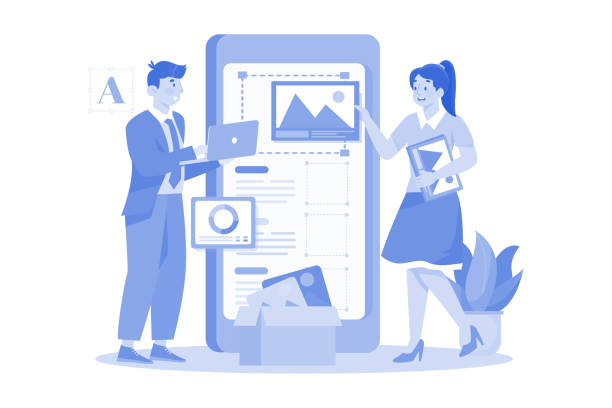
When it comes to online presence, many businesses find themselves at a crossroads, choosing between ready-made templates and custom website design.
While templates may initially seem cheaper and faster, the long-term benefits of a custom website are far greater and offer stronger economic justification.
The most important advantage is powerful branding and a unique visual identity.
With custom website design, you can ensure that every pixel of your website aligns with your brand’s values and aesthetics, bearing no resemblance to the thousands of other websites using a common template.
This precise analysis of brand needs leads to the creation of an unparalleled user experience (UX) that attracts visitors and converts them into customers.
This customization approach allows you to fully align every element, from color palette and typography to element layout and animations, with your brand’s visual language, sending a cohesive and memorable message to your audience.
Furthermore, website performance and speed are optimized in custom designs.
Ready-made templates often contain redundant code, unnecessary plugins, and heavy resources that significantly reduce site loading speed, whereas a custom website includes only the necessary code for your desired functionality.
This speed optimization not only improves the user experience and keeps users satisfied but also has a significant impact on SEO rankings, as Google assigns higher scores to faster websites.
Another point is scalability and flexibility.
Businesses grow over time, and their needs change.
A custom website is built to adapt to these changes and allow new features to be added without the need for a complete and costly rebuild.
This specialized capability for seamless integration with Customer Relationship Management (CRM) systems, Enterprise Resource Planning (ERP) systems, or other business software significantly increases operational efficiency and streamlines data flow.
Security is also a very important aspect; custom websites are designed with the highest security standards in mind, making them more resilient against cyber-attacks and ever-increasing threats, whereas ready-made templates may have known vulnerabilities that can be exploited by hackers.
Finally, specialized support and maintenance for custom websites are far more efficient because the development team has complete familiarity with all code details and its structure and can quickly react to any issues or change requests.
This comprehensiveness in design transforms your website into a smart and sustainable investment.
Step-by-Step Custom Website Design from Idea to Launch
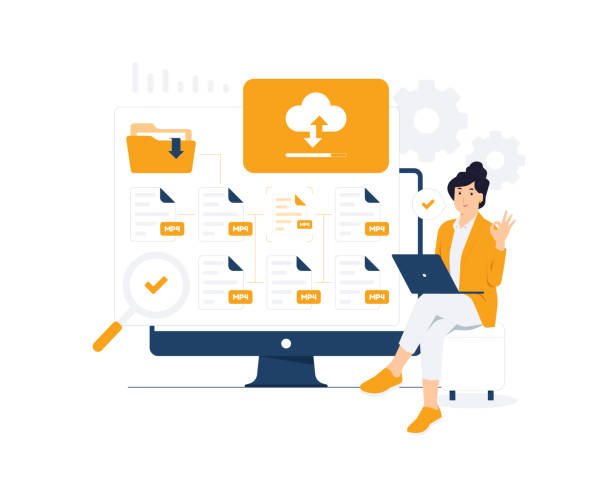
The custom website design process has a clear, structured, and logical path that begins with close and continuous collaboration between the client and the development team and continues through the post-launch support phase.
This guidance approach is designed to ensure that all client needs and expectations are met, and to build a website that precisely achieves their business objectives.
Phase One: Comprehensive Discovery and Planning.
In this initial and crucial phase, in-depth consultation sessions are held with the client to fully define precise business goals, identify target audiences, specific technical requirements, and project budget limits.
This stage also includes extensive market research, detailed competitor analysis, and examination of industry trends to define the best strategy for your custom website design.
The output of this phase is a comprehensive Project Requirements Document (Scope Document) that clearly outlines all details, functionalities, and expectations, serving as a roadmap for subsequent stages.
Phase Two: UI/UX Design (User Interface and User Experience).
Once the needs and objectives are defined, the design team begins creating wireframes and then detailed visual mockups.
Wireframes are initial skeletal layouts of pages focusing on functionality and arrangement, while mockups provide more detailed visual representations of the final site appearance, including colors, fonts, and images.
The goal at this stage is to create a visually pleasing, intuitive, and smooth user experience that is easy to navigate and guides users optimally along your desired path, whether it’s purchasing, registering, or obtaining information.
Client feedback at this stage is crucial for refining and improving designs until full satisfaction is achieved.
Phase Three: Development and Coding.
After final design approval, the development team begins converting visual mockups into actual, functional code.
This includes the development of the front-end, which consists of HTML, CSS, and JavaScript for building the user-visible interface, and the back-end, which includes programming languages such as Python, PHP, Node.js, or Ruby, and database management.
In this phase, all desired functionalities, forms, payment systems, content management, and interactive features are implemented accurately and optimally.
Phase Four: Comprehensive Testing and Launch.
Before the final public launch, the website undergoes rigorous and comprehensive testing for functionality, security, cross-browser compatibility, and mobile responsiveness.
Any bugs, errors, or performance issues are identified and promptly resolved.
After ensuring correct, optimal, and flawless operation, the website is deployed on a suitable server and made publicly accessible to users worldwide.
Phase Five: Ongoing Maintenance and Support.
After a successful launch, regular support and maintenance services are provided to ensure the smooth and uninterrupted operation of the website, apply security updates, resolve potential issues, and add new features as needed and as the business evolves.
This phase is absolutely essential for maintaining the long-term stability and security of your website.
| Phase | Key Description | Main Output |
|---|---|---|
| 1. Discovery and Planning |
Identifying goals, audience, competitor analysis, budget setting | Project Requirements Document (Scope Document) |
| 2. UI/UX Design |
Designing wireframes, visual mockups, and prototypes | Final graphic designs and user experience |
| 3. Development and Coding |
Front-end, back-end programming, and database integration | Functional and operational website |
| 4. Testing and Launch |
Comprehensive testing (performance, security, compatibility) and final deployment | Live, stable, and public website |
| 5. Maintenance and Support |
Updates, troubleshooting, future development, monitoring | Stable performance, continuous security, and future growth |
Technical Aspects and Technologies Used in Custom Website Design

Custom website design, beyond a beautiful and user-friendly appearance, requires deep specialized knowledge of web system architecture, software engineering principles, and mastery of the latest web technologies.
In this complex process, several technical layers are involved, each playing a vital role in the website’s performance, stability, security, and scalability.
The main part of web development is divided into two sections: Front-end and Back-end, each having its own set of tools and programming languages.
The front-end refers to everything the end-user directly interacts with and sees in their browser, including page layouts, colors, fonts, images, interactive forms, and animations.
Primary languages used in the front-end include HTML (HyperText Markup Language) for structuring content, CSS (Cascading Style Sheets) for styling and visual presentation, and JavaScript for adding interactivity, dynamism, and client-side logic.
JavaScript frameworks and libraries like React, Angular, and Vue.js are also used to build complex, responsive (Responsive Design), and single-page applications (Single-Page Applications) that provide a smoother user experience.
In contrast, the back-end is the central core and mastermind of the website, responsible for data processing, communication with the database, user management, executing the application’s business logic, and ensuring data security.
Common programming languages for the back-end include Python with frameworks like Django and Flask, which are popular for their simplicity and power; PHP with the Laravel framework, known for fast and scalable web development; Ruby with Ruby on Rails, emphasizing rapid development and convention over configuration; and Node.js, which enables server-side development with JavaScript and is suitable for real-time applications.
The choice of back-end language and framework depends on the project’s complexity, future scalability needs, the desired ecosystem, and the development team’s preferences.
Databases are also an indispensable part of any dynamic and interactive website.
There are various types of databases, each with its own advantages and disadvantages.
Relational (SQL) databases like MySQL, PostgreSQL, and SQL Server are suitable for structured data and complex relationships, while NoSQL databases such as MongoDB (document-based) and Cassandra (columnar) are used for large, unstructured data with high horizontal scalability requirements.
The choice of database is also made based on the type and volume of data the website needs to manage, as well as their structure and relationships.
Cybersecurity is another critical dimension that receives high priority in custom website design and is continuously considered from the initial design phases to after launch.
From implementing secure SSL/TLS protocols for communication encryption to combating common attacks like SQL injection, cross-site scripting (XSS), and cross-site request forgery (CSRF), the development team is committed to creating a secure and reliable online environment for users and protecting data.
This includes regular software updates, continuous monitoring to identify threats, and implementing best security practices in coding and server configuration to protect your website against increasing threats.
All these technical details, together, form a powerful, secure, high-performance, and scalable custom website that is designed and implemented fully in accordance with your business’s unique needs.
Does your current website showcase your brand’s credibility as it should? Or does it drive away potential customers?
Rasawweb, with years of experience in professional corporate website design, is your comprehensive solution.
✅ A modern, beautiful website tailored to your brand identity
✅ Significant increase in lead generation and new customer acquisition
⚡ Contact Rasawweb now for a free corporate website design consultation!
Search Engine Optimization (SEO) with Custom Website Design
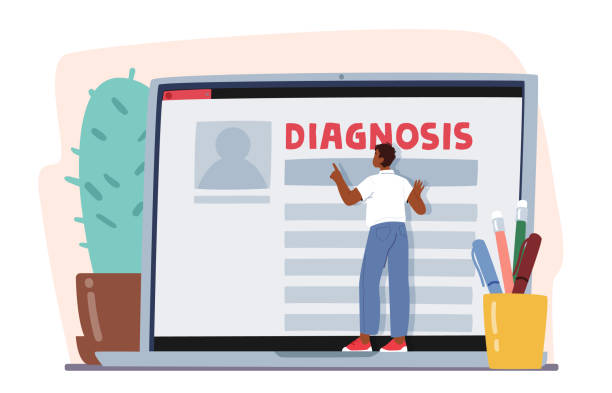
One of the biggest and most vital advantages of custom website design is its unparalleled potential and complete control over Search Engine Optimization (SEO).
While ready-made templates often face inherent limitations and challenges in SEO and offer little flexibility, a custom website gives you complete and unconditional control over all technical, content, and off-page aspects of SEO.
This specialized and guiding section delves deeper into how custom design positively impacts your website’s ranking in search results.
Firstly, clean and optimized code architecture.
Search engines like Google highly prefer clean, structured, and organized code.
In a custom design, developers can write code that is lightweight, fast, efficient, and free from any “extra code” or unnecessary plugins, which are commonly found in ready-made templates and general Content Management Systems (CMS).
This helps search engine crawlers to crawl your site’s content faster and more efficiently, understand it, and index it correctly, resulting in better rankings in search results.
Secondly, high loading speed and optimized performance.
Site speed is a critical Google ranking factor that directly impacts user experience and SEO.
With custom website design, you can utilize advanced performance optimization techniques such as optimizing image compression, minifying and compressing CSS and JavaScript files, using browser caching, and implementing a CDN (Content Delivery Network) to reduce page load times.
Every millisecond counts; faster websites not only keep users more satisfied but also send a positive signal to search engines.
Thirdly, customizable URL structure, logical hierarchy, and user-friendly navigation.
Custom websites allow for the creation of friendly and understandable URLs (SEO-friendly URLs) that are more meaningful for both users and search engines and include relevant keywords.
Also, the site’s navigation structure and content hierarchy (Site Architecture) can be designed to have a clear information flow, helping search engines better understand the website’s main topics, the relationships between pages, and the importance of each section.
This means improving internal links and optimizing the distribution of page authority (Link Equity).
Fourthly, unparalleled flexibility in implementing advanced SEO strategies.
From easily adding Schema Markup for rich and attractive display in search results (Rich Snippets) to implementing A/B testing for Conversion Rate Optimization (CRO) and evaluating the impact of design changes on SEO, a custom website allows you to implement any SEO strategy without encountering the limitations and obstacles of ready-made templates.
This means continuous guidance and the ability to quickly adapt to changes in Google’s algorithms and new SEO trends.
Ultimately, custom website design provides a solid, scalable, and fully optimized platform for implementing a comprehensive and effective SEO strategy that directly leads to increased targeted organic traffic, improved online visibility, and enhanced brand credibility.
The Importance of User Experience (UX) and User Interface (UI) in Custom Websites
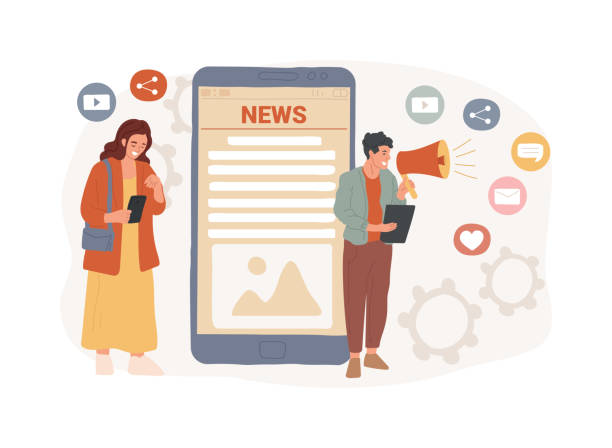
At the heart of every successful and efficient custom website design lie the critical concepts of User Experience (UX) and User Interface (UI).
These two elements, though often mistakenly used interchangeably and possessing subtle differences, play distinct yet highly related and complementary roles in user satisfaction and, consequently, the ultimate success of a website.
This educational and analytical section delves deeper into their importance and impact on overall website performance.
User Interface (UI) refers to the look and feel of the website; this includes all visual elements with which the user interacts, such as color palettes, fonts, button and menu layouts, images, icons, and animations.
An attractive, beautiful, modern, and professional UI makes your website visually appealing and inviting, creating a positive first impression in the user’s mind.
However, User Experience (UX) goes beyond visual aesthetics; it refers to the entire process of user interaction with your website and addresses whether this interaction is easy, efficient, enjoyable, and meaningful.
Can users quickly and easily find the information they need without confusion? Is the process of purchasing, registering, or filling out forms smooth and unimpeded? Does the website respond to user needs and expectations?
In custom website design, the design team can create a unique and fully optimized UX/UI by focusing entirely and conducting comprehensive research on your specific target audience.
This involves conducting precise research into user behavior, their psychological and operational needs, pain points, and challenges they may encounter.
Based on this in-depth research, a User Journey Map and User Scenarios are designed to ensure that users can easily achieve their goals on the website and have a positive and seamless experience.
An optimized and efficient UX/UI significantly increases the Conversion Rate.
If users can easily find the products or services they want, add them to their cart, and complete the payment process with minimal steps and complexity, their likelihood of completing a purchase is much higher.
Similarly, if information is presented clearly and structured, and site navigation is intuitive and logical, users will spend more time on the site, view more content, and gain greater trust in your brand and offerings.
Furthermore, a positive user experience significantly contributes to reducing the Bounce Rate.
If visitors leave the site immediately upon arrival due to complexity, lack of visual appeal, or slow loading, this indicates a fundamental UX issue.
A custom website with a strong UX/UI keeps users engaged, encourages them to interact more with content and functionalities, and thereby sends positive signals to search engines, as search engines prefer websites where users have a positive experience and spend a significant amount of time.
Ultimately, investing in UX/UI in custom website design is not merely an expense but a strategic and vital investment in your business’s long-term success, increased customer loyalty, and differentiation in today’s competitive market.
Maintenance, Updates, and Future Development of Your Custom Website
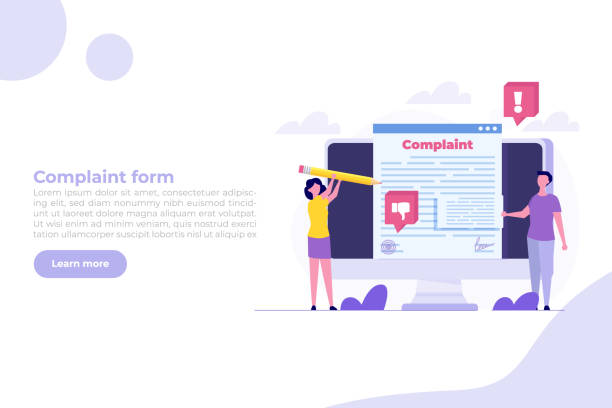
Launching a custom website design is only the beginning, not the end.
To ensure optimal performance, stable security, and relevance with changing market needs and continuous technological advancements, ongoing maintenance and updates are essential and unavoidable.
This guiding and informative section discusses the importance of this topic and its various aspects to provide a comprehensive overview of post-launch commitments.
The first and most important aspect is cybersecurity.
Cyber threats are constantly evolving, and hackers are always looking for vulnerabilities in websites.
An outdated website becomes an easy target for cyber attackers.
Regular maintenance includes applying security patches, updating used libraries and frameworks, continuous monitoring for suspicious and unusual activities, and regular, automated backups of all website data and files.
These preventive measures prevent the loss of sensitive information, malicious intrusions, and service disruptions, providing peace of mind for both the business and its users.
The second aspect is performance and speed optimization.
Over time, with increased content volume, website traffic, or the addition of new features, website loading speed may decrease.
Maintenance involves continuous performance review, database optimization (such as removing redundant data and proper indexing), cache clearing, and improving code structure to ensure high loading speed and quick responsiveness.
This not only significantly improves the user experience and keeps users satisfied but also affects SEO rankings, as search engines prioritize faster websites.
The third aspect is adaptability to technological and browser changes.
Web browsers (such as Chrome, Firefox, Edge, and Safari) and mobile and desktop operating systems are constantly updating and introducing new standards.
A custom website must be regularly tested to ensure it displays and functions correctly across all platforms, browsers, and devices (including desktops, tablets, and mobiles).
This also includes Mobile Responsiveness, which is of high importance today for SEO and user accessibility.
The fourth aspect is future development and adding new features.
A custom website allows you to easily add new features based on customer feedback, market trends, or the evolving needs of your business.
This could include a completely new e-commerce module, an advanced online booking system, or more interactive features to attract and retain customers.
This explanation is vital for your long-term planning and maintaining your business’s competitive advantage in the online space.
Ultimately, entrusting the maintenance and development of your website to a specialized team that built the website from scratch ensures knowledgeable, effective, and integrated support, allowing you to focus on your core business activities with peace of mind.
| Maintenance Task | Detailed Description of Task | Importance and Benefits for the Website |
|---|---|---|
| Regular and Automated Backup | Regular copying of all files and databases to secure locations | Comprehensive protection against data loss, human errors, and attacks |
| Security and Software Updates | Applying security patches, updating frameworks and libraries | Continuous protection against cyber attacks and new vulnerabilities |
| Performance and Speed Monitoring | Monitoring loading speed, response time, and site uptime | Improving user experience, reducing bounce rate, and enhancing SEO ranking |
| Database Optimization | Deleting unnecessary data, optimizing queries, and database structure | Increasing information retrieval speed and overall site efficiency |
| Browser and Device Compatibility Testing | Ensuring correct display and functionality across various browsers and devices | Wide accessibility for all users and integrated UX |
Comparing the Cost and Investment Value in Custom Website Design
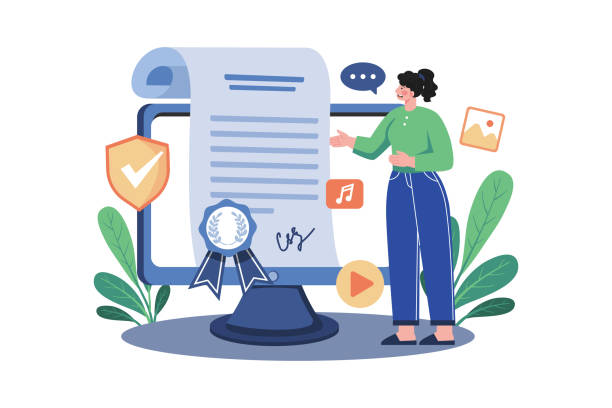
One of the common questions regarding custom website design concerns its initial cost.
At first glance, it might seem that investing in a custom website is more expensive than using ready-made templates or website builder platforms.
But is this true, and is this higher cost economically justifiable? This questioning and analytical section answers this key question and helps you gain a comprehensive view of the cost-value equation.
It is true that the initial cost of custom website design is typically higher than purchasing and configuring a ready-made template.
This difference is due to the greater time and effort spent on meticulous planning, business needs analysis, unique UI/UX design, coding from scratch without redundant code, and comprehensive testing and debugging.
You are essentially paying for the expertise and experience of design and development teams who possess specialized skills in information architecture, user experience design, cybersecurity, performance optimization, and the implementation of complex functionalities.
This is an investment in expertise and quality.
However, the long-term value and return on investment (ROI) of this approach must also be considered.
A custom website acts as a strategic asset and a powerful marketing and sales tool for your business.
While ready-made templates might seem cheaper initially, they often come with numerous hidden costs over time.
These costs can include purchasing expensive plugins to add essential functionalities, the need to hire developers for minor and difficult customizations, security issues arising from template vulnerabilities, serious scalability limitations that hinder business growth, and ultimately, the need for a complete website rebuild in the near future due to the template’s inability to meet changing needs.
These hidden costs and ongoing troubles can far outweigh the initial investment in a custom website.
Return on Investment (ROI) in custom website design can be significantly higher and manifest itself in various aspects.
A website optimized for user experience and SEO attracts more traffic through search engines, experiences higher conversion rates due to user-friendly design and easier purchasing flow, and ultimately leads to increased revenue and sales growth.
Customization capabilities allow you to optimize your business processes, reduce operational costs, and improve customer service.
For instance, implementing a custom Content Management System (CMS) or a dedicated online booking system can eliminate the need for additional personnel to manually manage bookings or update content, thereby saving on labor costs.
Furthermore, brand and reputation protection is also a significant factor that cannot be overlooked.
A poorly designed, slow, or insecure website can quickly damage your brand’s reputation and erode customer trust.
In contrast, a professionally custom-designed website, with flawless performance, high security, and a distinctive appearance, attracts customer trust and confidence and presents a powerful and credible image of your brand.
Ultimately, the cost of custom website design should be viewed not as a current expense but as a vital and long-term investment in your business’s digital infrastructure and sustainable growth in the online space, securing its future in today’s competitive market.
Did you know your company’s website is the first point of contact for 75% of potential customers?
Your website is the face of your brand. With **Rasawweb**’s corporate website design services, build an online presence that earns customer trust.
✅ Create a professional and lasting image of your brand
✅ Attract target customers and boost online credibility
⚡ Get a free consultation from **Rasawweb** experts now!
Success Stories of Custom Website Design in Iranian Businesses
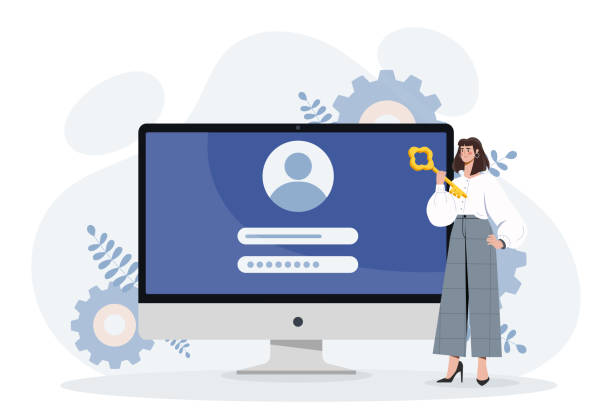
Experience has shown that custom website design can play a pivotal and decisive role in the digital transformation and significant growth of businesses, especially in Iran’s dynamic and competitive market.
In this informative and engaging section, we will look at a few hypothetical yet inspiring examples of Iranian businesses that have achieved remarkable success and solidified their market position by making a smart investment in a custom website.
Example One: “Daneshboom” Online Education Platform.
This educational startup, aiming to provide specialized and practical courses to students and professionals, had an urgent need for a completely custom Learning Management System (LMS).
Their main challenge was that no ready-made template could provide their desired complex functionalities, including high-quality video courses, advanced interactive quizzes with instant feedback, precise student progress tracking, and multifaceted communication features between instructors and learners, in an integrated and scalable manner.
By choosing custom website design, they developed a system that was not only visually very attractive and user-friendly but also technically powerful, secure, and fully scalable, designed to support a large number of concurrent users and a high volume of content.
The result of this strategic investment was that in less than a year, Daneshboom’s active user base grew by over 500% and it became one of the top online educational platforms in Iran.
Customization features such as internal discussion forums with file-sharing capabilities, an advanced grading system, and direct communication tools between instructors and students greatly enhanced the user experience and increased user loyalty.
Example Two: “Honarmand Bazaar” Online Handicrafts Store.
This store was established with the aim of supporting local artists and directly offering their unique handmade products to national and even international markets.
Their main challenge was the display of a highly diverse range of products with full details, complex inventory management for thousands of handmade items, and providing a unique and personalized shopping experience for each customer.
With a custom website design approach, they were able to create a virtual gallery with advanced filtering and search capabilities based on art type, geographical region, raw materials, crafting technique, and even the story behind the creation.
A secure payment system, a very simple and inspiring user interface, and the possibility of direct communication with the artist encouraged buyers to browse and purchase more.
Honarmand Bazaar has now become one of the main and popular destinations for online handicraft shopping in Iran, playing a significant role in expanding the market for local artists and preserving cultural heritage.
Example Three: “Sakht-o-Saz Hooshmand” Engineering Services Company.
This large company, active in civil engineering projects, had an urgent need for a dedicated client portal where they could monitor project progress in real-time, securely share technical documents and maps, and communicate directly and effectively with the project engineering team.
With a custom website design and a specialized approach, they implemented a secure, efficient, and highly user-friendly system that revolutionized communication and collaboration between the company and its clients.
This portal not only increased transparency and trust but also led to significant savings in communication time and resources, and due to high accessibility, greatly enhanced customer satisfaction.
These stories are just a few examples of the immense potential and effectiveness of custom website design in empowering businesses to achieve their ambitious goals, increase competitiveness, and foster sustainable growth in the digital space.
These successes demonstrate that investing in a unique digital platform is the key to unlocking new doors to a bright future.
The Future of Custom Website Design and Emerging Trends
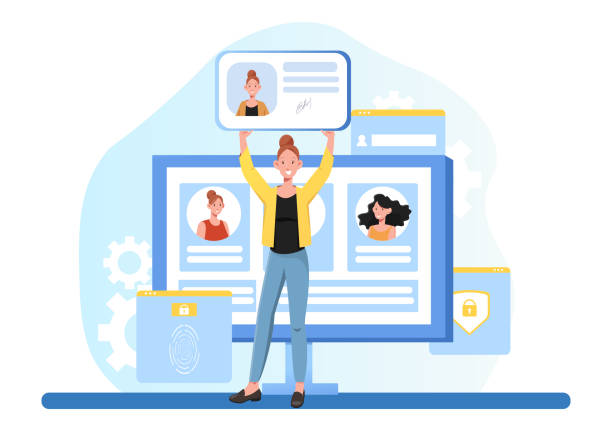
The world of the web is constantly changing and evolving, and custom website design is no exception.
Looking at the near and distant future shows what key trends will shape the next generation of custom websites and how these websites will transform our digital experiences.
This informative and analytical section addresses these important and influential advancements.
One of the most important emerging trends is Hyper-personalization.
With significant advancements in Artificial Intelligence (AI) and Machine Learning, custom websites will be able to dynamically and instantly adapt content, products, services, and even page layouts based on each user’s past behavior, current preferences, location, and even emotional state.
This means that every visitor will have a completely unique experience tailored to their personal needs, which will significantly increase conversion rates, user engagement, and customer loyalty, creating a sense of deep connection with the brand.
Another trend is voice experiences, Virtual Reality (VR), and Augmented Reality (AR).
Websites will no longer be limited to purely visual interaction.
Integrating voice search capabilities, Voice User Interfaces (VUIs) like virtual assistants, and even product galleries or virtual environments in Augmented Reality and Virtual Reality, will fundamentally transform how users interact with brands.
These innovations offer unprecedented opportunities to create engaging, immersive, and unforgettable experiences that go far beyond traditional websites.
Furthermore, support for Web3 and blockchain technology is also emerging.
Custom websites may soon incorporate features such as decentralized digital wallets, Non-Fungible Tokens (NFTs) for digital asset ownership, and cryptocurrency-based payment systems.
This will give users unprecedented control over their data, enable new and transparent business models, and move towards a more decentralized internet.
The importance of sustainability and green design is also increasing.
Given growing environmental concerns, developers in custom website design will move towards optimizing code, reducing required server resources, and utilizing green hosting practices to decrease website energy consumption and minimize their carbon footprint.
This reflects businesses’ social responsibility in the digital space and aligns with society’s growing values.
Finally, cybersecurity and data privacy will remain a central focus and become even more important than ever.
With the increasing sophistication of cyber-attacks and stricter data privacy regulations (such as GDPR), custom websites must employ the latest security protocols, best encryption practices, and advanced security architectures to protect sensitive user information from threats.
These developments indicate that custom website design will not only continue but will advance faster towards intelligence, interactivity, security, and sustainability, playing a pivotal role in shaping the digital future.
Frequently Asked Questions
| Question | Answer |
|---|---|
| What is custom website design? | Custom website design refers to the process of building a website that is designed and coded from scratch based on the specific needs, goals, and brand identity of a particular business, unlike using ready-made templates. |
| What is the difference between a custom website and a template-based website? | A custom website offers high flexibility, scalability, greater security, and the ability to implement precise business-specific features, whereas ready-made templates may have limitations in design and functionality. |
| What are the advantages of custom website design? | Advantages include unique design, better search engine optimization (SEO), higher security, better loading speed, custom user experience, and the ability to add specific features in the future. |
| How long does custom website design take? | The time required for custom website design depends on the project’s complexity, number of pages, required functionalities, and content volume, and can vary from several weeks to several months. |
| How is the cost of custom website design calculated? | The cost is calculated based on the working hours of the design and development team, project complexity, requested specific features, UI/UX design, content volume, and post-design services (such as support and maintenance). |
And other services of Rasawweb Advertising Agency in the field of advertising
Smart Website Development: A professional solution for online growth focusing on SEO-driven content strategy.
Smart Advertorial: An innovative service for increasing digital branding through custom programming.
Smart Brand Identity: A dedicated service for sales growth based on attractive UI design.
Smart Data Analysis: A professional solution for improving SEO ranking with a focus on intelligent data analysis.
Smart Digital Branding: An effective tool for digital branding with the help of attractive UI design.
And over hundreds of other services in internet advertising, advertising consultation, and organizational solutions
Internet Advertising | Advertising Strategy | Advertorial
Resources
Advantages of Custom Website Design
Custom Web Development Services
Dedicated Servers for Custom Websites
Custom Website Design Tips
? Are you ready for your business to leap forward in the digital space? Rasawweb Afarin Digital Marketing Agency offers a wide range of professional services, including e-commerce website design and comprehensive SEO strategies, to help you achieve your online marketing goals and establish a strong and successful internet presence.
📍 Tehran, Mirdamad Street, next to Bank Markazi, Kazeroon Janoubi Alley, Ramin Alley, No. 6

